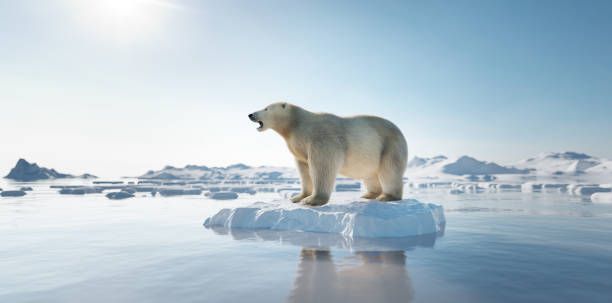Urgent climate crisis at the edge of the world.

zero-degree isotherm will likely maintain a comparable advancement rate before decelerating in the latter part of the century. Conversely, if emissions increase, the migration of the isotherm will intensify, Hidden beneath its icy surface, Antarctica is facing big changes because of climate change. Antarctica, the coldest, driest, and windiest place on Earth, is challenging the relentless force of climate change. As global temperatures rise, this remote landmass at the bottom of the world is experiencing dramatic temperature shifts, from rapidly melting glaciers to dwindling sea ice
In recent years, Antarctica has experienced a series of unprecedented heatwaves. On 6 February 2020, temperatures of 18.3 degree Celsius were recorded, the highest ever on the continent beating the previous record of 17.5 degree Celsius which had only been set a few years earlier. Around February 2022, another strong heatwave in Antarctica led to record breaking surface ice-melt. A study published in THE GUARDIAN in March found meltwater from the continent’s ice sheets dramatically slow down the southern ocean overturning circulation of deep ocean current, by 2050 if greenhouse gas emissions continue at their current level. Two months later, a paper by some of the same researchers, estimated the circulation, which influences global weather patterns and ocean temperatures and nutrient levels, had already slowed by above 30 % since the 1990s.

Perhaps, scientists tried to track the southward migration of the zero degree isotherm, by adapting the measurement of speed. The zero-degree isotherm is an imaginary line that encloses the areas that are at zero degrees or lower. Its southward movement means that the area with temperatures below zero Celsius in Antarctica is getting smaller and smaller. Given that water freezes at zero degrees, this movement will have serious consequences for ecosystems and for the Cryosphere (areas of the Earth where water is frozen). Calculations show that the zero-degree isotherm has moved at a speed of 15.8km per decade since 1957 in the area surrounding the Antarctic, while on the Antarctic peninsula itself it has moved at 23.9km per decade. As a result, it now sits over 100km south of where it was in the mid 20th century. The measurements show that the speed of climate change on the edge of Antarctica is four times faster than the average of other ecosystems.
The impact of emissions
To anticipate the repercussions of the southward shift of the zero-degree isotherm, the scientists analyzed our data using twenty distinct climate models. While there is variability in the projected movement of the isotherm across the models, they unanimously forecast a significant shift further southward in the coming decades.

Furthermore, these models indicate that the pace of the isotherm’s movement will escalate over the next few decades, irrespective of emissions. Yet, the degree to which it migrates southward in the latter half of the 21st century hinges on our carbon emissions. Hence, we persist with current emission levels, the persisting in its southward trajectory until the century’s end.
Impact on the cryosphere and ecosystems
The zero-degree isotherm’s southward movement will not remain solely in the atmosphere, it will also affect the cryosphere (all of the frozen areas of Antarctica) and the biosphere (the species that live there). Changes in the isotherm’s position will mean more liquid rain instead of snow in the outermost regions of the continent, though it may in fact cause increased snowfall in other areas.

Solutions
Climate change in Antarctica is a very serious problem for the world. Perhaps, people say “if there is a will there is a way”, the ways for reducing the climate change in Antarctica are as follows:
Renewable transition energy
Establishing renewable energy systems( solar, wind) in research stations and tourist facilities can be a great way to deal with rising climate change at the edge of the world. As in return we get Reduced reliance on fossil fuels, cutting greenhouse gas emissions and minimizing environmental impact on the fragile Antarctic ecosystem.
Limiting tourist impact:
By creating marine protected areas and regulating fishing practices to prevent overfishing and habitat destruction can be very effective against the changing climate which is significant in maintaining biodiversity and supporting ecosystem resilience.

Conclusion
The recent unprecedented heatwaves, record-breaking temperatures, and the southward migration of the zero-degree isotherm underscore the profound impact of climate change on this remote and fragile continent. To address this crisis, proactive measures are imperative. The urgency of these actions cannot be overstated. By taking swift and concerted measures to reduce our carbon footprint and protect Antarctica’s unique environment, we can contribute to global efforts to combat climate change and preserve this pristine wilderness for future generations. Antarctica’s changing climate is a stark reminder of the pressing need for collective action and international cooperation to address the challenges posed by climate change at the edge of our world.















